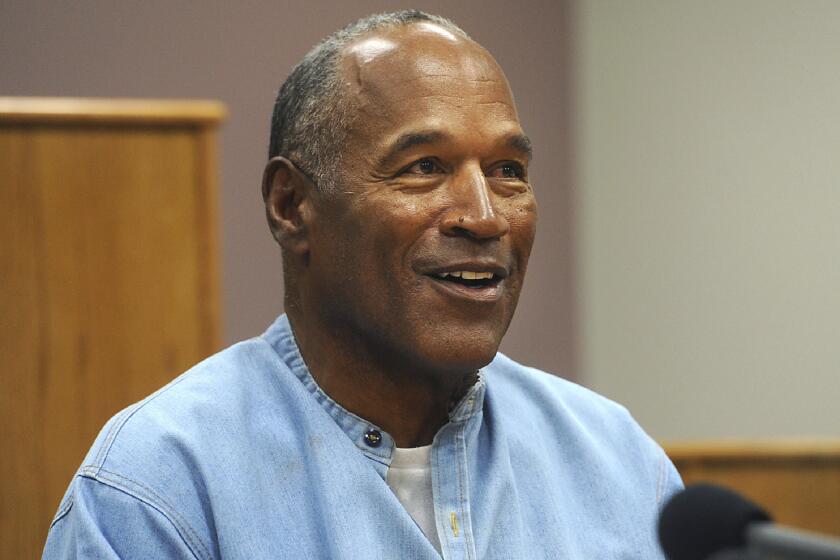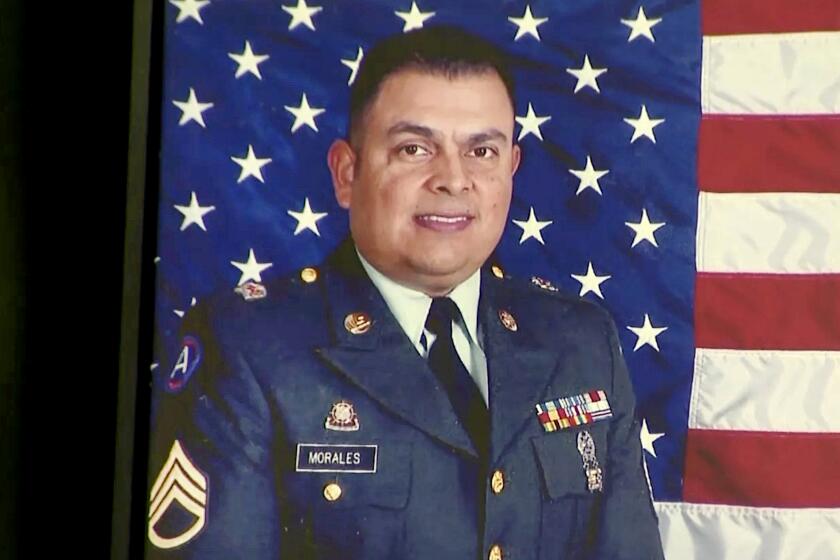High-speed rail critics question the first route segment, which will end in an almond orchard
The state’s plan to build an initial stretch of high-speed rail line, from San Jose to a map point in the midst of Central Valley farmland, came under renewed attack at an oversight hearing Monday.
Republicans on the House rail subcommittee had sought to hold the hearing in the Silicon Valley but ran into Democratic opposition, according to sources familiar with the matter. So the group convened around folding metal tables in a nondescript basement room in a San Francisco federal building.
There is a lot that we are doing that will have immediate benefit.
— Dan Richard, chairman of the rail authority
Rep. Jeff Denham (R-Turlock), chairman of the panel, chided the state for lacking a plan to complete the Los Angeles-to-San Francisco bullet train system.
“You could be stuck in a field somewhere between Shafter and Wasco … and … out of money,” Denham said.
The apparent absurdity of the abbreviated route was not lost on supporters.
“It seems odd,” acknowledged Dan Richard, chairman of the rail authority, “to be stopping in the middle of an almond orchard.”
He added, however, that an additional $2.9 billion from the federal government could extend the line to Bakersfield and eventually capture billions of dollars in fare revenue.
The hearing Monday largely reflected the enthusiasm of Democrats and the skepticism of Republicans for the $64-billion project.
“We don’t want something that has no riders, no train, no investor, only to have to wait for decades,” Denham said of the initial route.
Richard, however, told the subcommittee that the project is “going smoothly.” The state’s new business plan, released earlier this year, said the project had enough sources of money from bonds, federal grants and state greenhouse gas fees to build a $21-billion line from San Jose to a point somewhere near the small agricultural town of Wasco, before continuing on with new money to more populated destinations.
Since then, the greenhouse gas fees, raised in so-called cap-and-trade auctions, have fallen flat and the auctions are under a legal challenge by the state’s Chamber of Commerce. The sale of bonds has been delayed by years over tough legal protections built into the 2008 bond act that voters approved.
The current construction, centered on 29 miles in Fresno, has been funded mostly by the federal grants and without state matching funds that will have to be paid later.
But Richard said he had “great confidence” that the cap-and-trade auctions would survive and that ultimately private investors would help the state complete construction, closing what is now a $43.5-billion funding shortfall that would be needed mainly to cross the Tehachapi and San Gabriel mountains.
But some Democrats and Republicans are beginning to worry that the project could turn into a train ride to nowhere, with snippets of the route scattered across the state as Bay Area and Los Angeles deal makers siphon off funds.
What if the state ultimately fails to connect the Bay Area to Southern California, asked Rep. Zoe Lofgren (D-San Jose), based on concerns Denham raised at the hearing.
“I don’t want my name [or] the governor’s name to be associated with a piece of track that isn’t connected to the rest of the state,” Richard said.
But he continued with an answer that provided insight into how the state might justify an isolated segment if the entire system never gets built.
The Central Valley segment, he said, would eliminate 55 grade crossings and provide a dedicated line for Amtrak trains, relieving overburdened freight track.
“There is a lot that we are doing that will have immediate benefit,” he said.
ALSO
First JFK, then LAX: How do you control chaos in a false alarm shooter situation?
County-USC patients’ personal information stolen in car break-in
UPDATES:
12:15 p.m.: This article was updated with additional deatils.
This article was originally published at 7:10 p.m.
More to Read
Start your day right
Sign up for Essential California for news, features and recommendations from the L.A. Times and beyond in your inbox six days a week.
You may occasionally receive promotional content from the Los Angeles Times.







